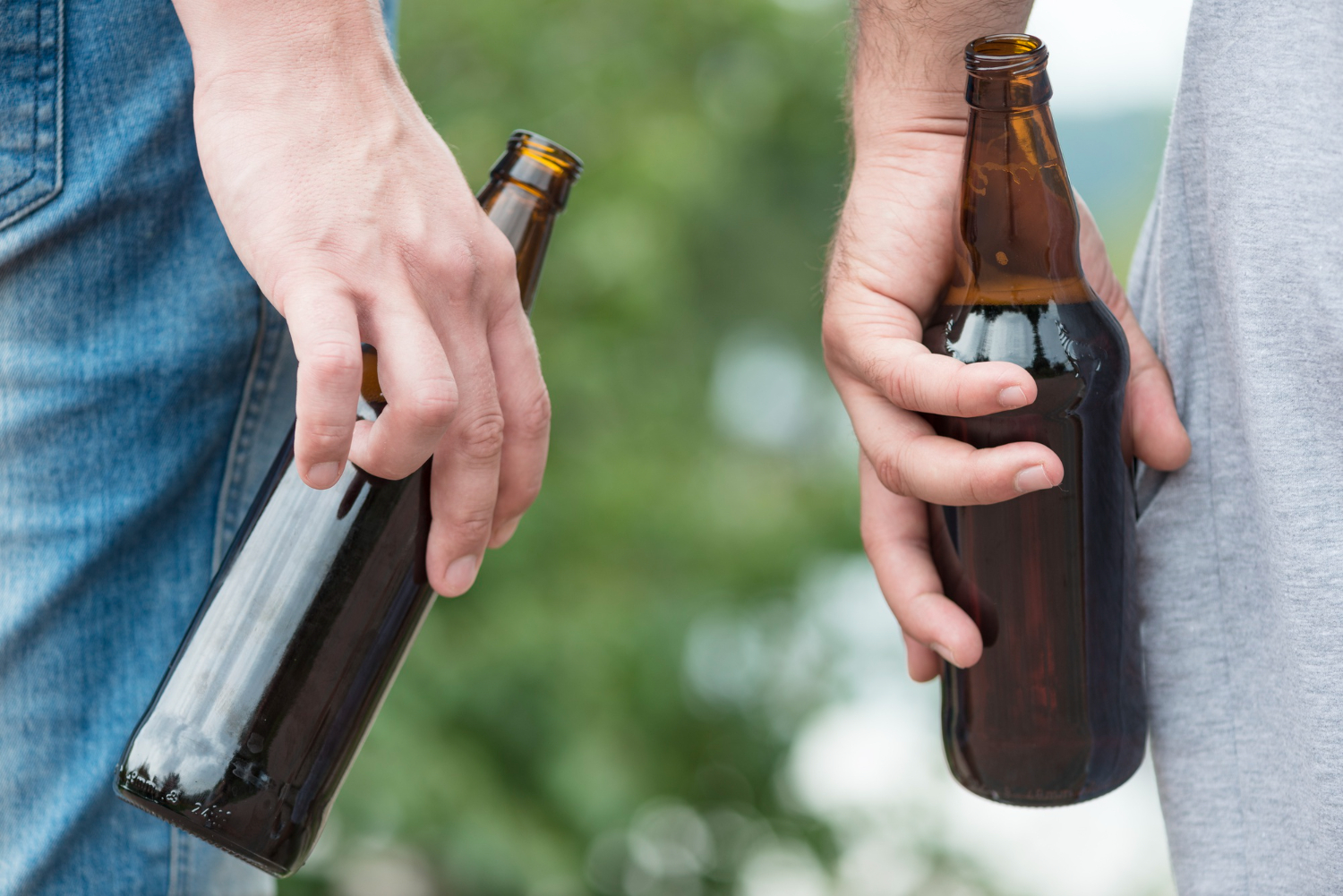The Healing Power of Pets
Pets have long been recognized for their ability to bring joy and companionship into our lives. However, their impact goes beyond providing simple companionship. Pets have also shown great potential in aiding the recovery process for individuals facing various physical and emotional challenges. In this section, we will explore the concept of pets as therapy and the benefits they can offer in the recovery process.
Introduction to Pets as Therapy
Pets as therapy, also known as animal-assisted therapy, involves incorporating animals into the treatment process to improve physical, emotional, and social well-being. This therapeutic approach recognizes the unique bond between humans and animals and harnesses the positive effects it can have on individuals' overall health.
Pets used in therapy can include dogs, cats, small animals, and even horses. These animals are trained to provide comfort, support, and companionship to individuals who may be recovering from physical injuries, managing chronic illnesses, or facing emotional challenges.
Benefits of Pets in the Recovery Process
The presence of pets in the recovery process can bring about numerous benefits for individuals, both physically and emotionally. Let's take a closer look at some of these benefits:
Physical Benefits
Pets can play an active role in encouraging physical activity during the recovery process. Whether it's taking a dog for a walk or engaging in playtime with a cat, these activities can help individuals increase their mobility, improve coordination, and enhance overall physical fitness. The presence of a pet can also provide a sense of motivation and accountability, making it easier for individuals to adhere to their physical therapy routines.
Additionally, pets offer comfort and companionship during challenging times. Their presence alone can provide a calming effect, helping to reduce stress and anxiety. This emotional support can be particularly beneficial for individuals navigating the recovery process, as it promotes a sense of well-being and aids in overall mental health.
Emotional Support
Pets have a remarkable ability to reduce stress and anxiety levels. Interacting with animals has been shown to lower blood pressure, decrease levels of stress hormones, and increase the release of feel-good hormones like oxytocin and serotonin. This emotional support can be especially valuable for individuals recovering from trauma, managing mental health conditions, or coping with the stress of a medical condition.
Pets also have the power to boost mood and overall well-being. The unconditional love and non-judgmental nature of animals can provide a sense of comfort, happiness, and emotional stability. They offer a source of companionship and can help individuals feel less alone during their recovery journey.
Pets can also play a crucial role in facilitating social connections. Their presence can act as an icebreaker, making it easier for individuals to engage in social interactions and forge new relationships. This can be particularly beneficial for individuals who may feel isolated or disconnected from others due to their recovery process.
Incorporating pets into recovery plans can be a valuable addition to traditional therapies and treatments. The positive impact they have on physical, emotional, and social well-being makes them an invaluable asset in the journey towards recovery. By recognizing the healing power of pets, individuals can harness their potential to enhance their overall quality of life during the recovery process.
Physical Benefits
Pets play a significant role in the recovery process, providing various physical benefits to individuals. Whether it's encouraging physical activity or offering comfort and companionship, pets can contribute to a person's overall well-being during their journey towards recovery.
Encouraging Physical Activity
One of the notable physical benefits of having a pet is the encouragement of physical activity. Pets, especially dogs, require regular exercise, which often prompts their owners to engage in physical activities as well. Whether it's going for walks, playing fetch, or participating in agility training, these activities can help individuals in their recovery process by promoting movement and exercise.
Incorporating physical activity into a recovery plan not only improves cardiovascular health but also enhances overall strength, flexibility, and coordination. It can also have positive effects on mental and emotional well-being, reducing stress and promoting a sense of accomplishment.
Providing Comfort and Companionship
Pets offer a unique form of comfort and companionship that can greatly aid in the recovery process. The presence of a beloved pet can provide a sense of emotional support, which in turn can alleviate stress and anxiety that often accompany the recovery journey.
Additionally, the physical touch and affectionate interactions with pets can release oxytocin, a hormone associated with feelings of love and bonding. This release of oxytocin can promote relaxation and reduce pain perception, contributing to a more comfortable recovery experience.
Pets, particularly cats and dogs, have also been shown to have a positive impact on blood pressure and heart rate. Interacting with them can lead to a decrease in stress-related physiological responses, such as lower blood pressure and reduced heart rate variability.
Incorporating pets into recovery plans can be a valuable asset, especially when it comes to the physical well-being of individuals. The combination of regular physical activity and the comfort provided by pets can contribute to a holistic recovery experience, improving both physical and emotional health.
Emotional Support
Pets play a significant role in providing emotional support during the recovery process. Their presence can have a positive impact on reducing stress and anxiety, as well as boosting overall mood and well-being.
Reducing Stress and Anxiety
Pets have a remarkable ability to help individuals experiencing stress and anxiety. Interacting with a pet, such as stroking their fur or playing with them, can activate the release of endorphins, which are known as "feel-good" hormones. This interaction promotes relaxation and reduces levels of stress and anxiety. In fact, studies have shown that spending time with pets can lead to a decrease in cortisol, a hormone associated with stress.
Additionally, pets offer a sense of comfort and security. Their non-judgmental and unconditional love provides a soothing effect, allowing individuals to feel supported and cared for. The rhythmic motion of petting a cat or dog can have a calming effect on the nervous system, helping to alleviate stress and anxiety.
Boosting Mood and Well-being
Pets have a remarkable ability to boost mood and overall well-being. The companionship and unconditional love that pets provide can help individuals feel happier and more content. Interacting with pets has been shown to increase the production of oxytocin, a hormone associated with bonding and feelings of happiness.
Having a pet as a part of the recovery process can also provide a sense of purpose and responsibility. Taking care of a pet, such as feeding them or engaging in playtime, offers a sense of routine and structure. This can be particularly beneficial for individuals who may be feeling overwhelmed or lacking motivation during their recovery.
Furthermore, the presence of pets can help distract individuals from negative thoughts or emotions. Engaging in activities with pets, like going for walks or playing games, can redirect focus and provide a sense of joy and pleasure. This diversion can contribute to an improved mood and a more positive outlook on the recovery process.
Pets offer valuable emotional support during the recovery process. By reducing stress and anxiety while boosting mood and well-being, they become cherished companions that provide comfort and motivation. Incorporating pets into recovery plans can create a positive and supportive environment that aids in the healing journey.
Social Connection
Pets play a crucial role in fostering social connection for individuals in the recovery process. They can facilitate social interaction and alleviate feelings of isolation, providing much-needed companionship and support during challenging times.
Facilitating Social Interaction
Pets act as catalysts for social interaction, creating opportunities for individuals in recovery to engage with others. Whether it's taking a dog for a walk in the neighborhood or participating in pet-related activities and events, pets can help break the ice and initiate conversations. They serve as a common topic of interest, allowing individuals to connect with fellow pet owners, neighbors, or even strangers who share a love for animals.
Moreover, pets can encourage individuals to join pet-related groups, clubs, or support networks, providing a sense of belonging and an avenue for building new friendships. These social connections can be invaluable, fostering a support system and providing emotional support throughout the recovery journey.
Alleviating Feelings of Isolation
Recovery processes can often lead to feelings of isolation and loneliness. However, pets can help alleviate these emotions by providing constant companionship and unconditional love. The presence of a furry friend can make individuals feel less alone and more connected to the world around them.
Pets are excellent listeners and offer a non-judgmental presence, allowing individuals to express their thoughts and emotions without fear of criticism or rejection. This can be particularly beneficial for individuals who may struggle to open up to others or find it difficult to verbalize their feelings. The bond between a pet and their owner can create a deep sense of emotional connection, offering comfort and solace during challenging times.
To further illustrate the social benefits of pets in the recovery process, consider the following data:
Pets have the power to bridge social gaps and provide a sense of belonging, helping individuals in recovery build meaningful connections and combat feelings of loneliness.
By facilitating social interaction and alleviating feelings of isolation, pets can significantly contribute to the recovery process. Their presence creates opportunities for social engagement and fosters a sense of belonging, ultimately enhancing the overall well-being of individuals on their journey to recovery.
Therapeutic Roles of Different Pets
Pets play a vital role in the recovery process, providing comfort, companionship, and emotional support to those in need. Different pets have unique therapeutic qualities that contribute to the healing journey. In this section, we will explore the therapeutic roles of dogs, cats, and small animals in the recovery process.
Dogs as Therapy Companions
Dogs have long been recognized as valuable therapy companions due to their affectionate nature and innate ability to connect with humans. They offer emotional support and unconditional love, creating a sense of comfort and security for individuals in recovery.
One of the significant benefits of dogs as therapy companions is their ability to encourage physical activity. Taking a dog for walks or engaging in playtime together provides opportunities for exercise, which can have positive effects on physical health and overall well-being. Additionally, the presence of a dog can help reduce stress and anxiety, promote relaxation, and even lower blood pressure.
Dogs are also known for their remarkable sense of empathy. They can sense emotions and provide comfort during times of distress. Their nonjudgmental presence can help individuals feel understood and supported, fostering a sense of emotional well-being during the recovery process.
Cats and Small Animals in Healing
While dogs often take the spotlight in therapy settings, cats and small animals also play important roles in the healing process. Cats, known for their independent yet affectionate nature, can provide soothing companionship and emotional support. Their gentle purring has a calming effect and can help alleviate stress and anxiety.
Small animals, such as rabbits, guinea pigs, and birds, can also contribute to the recovery process. These animals offer a sense of comfort through their soft presence and gentle interactions. Caring for these small creatures can provide a sense of purpose and responsibility, promoting a positive mindset and self-worth.
Pets, both cats and small animals, can create a sense of routine and structure in the lives of individuals in recovery. Their needs for feeding, grooming, and playtime provide a sense of purpose and help establish a daily routine, which can be beneficial for individuals seeking stability during their recovery journey.
Pets, regardless of their species, offer unique qualities and therapeutic benefits that can aid in the recovery process. Whether it's the companionship and exercise encouragement provided by dogs or the calming presence and routine establishment facilitated by cats and small animals, integrating pets into recovery plans can have a profound impact on overall well-being.
Understanding the therapeutic roles of different pets allows individuals in recovery to choose the best pet companion based on their personal preferences and needs. Pets can become invaluable partners in the recovery journey, offering unconditional love, support, and comfort along the way.
Incorporating Pets into Recovery Plans
Pets can play a valuable role in the recovery process, providing support and companionship to those undergoing treatment or rehabilitation. When considering the incorporation of pets into recovery plans, there are important guidelines to follow to ensure the well-being of both the individual and the pet, as well as creating a supportive environment for their interaction.
Guidelines for Pet-Assisted Therapy
Pet-assisted therapy involves the intentional use of pets to aid in the recovery process. When implementing pet-assisted therapy, it is essential to adhere to guidelines to ensure its effectiveness and safety. Here are some key guidelines to consider:
- Consult with a healthcare professional: Before introducing a pet into a recovery plan, it is crucial to consult with a healthcare professional or therapist. They can provide guidance on the appropriateness of incorporating pets into the specific recovery process and offer insights into potential benefits and risks.
- Evaluate the individual's condition: Assess the individual's physical and emotional condition to determine if they are ready for pet-assisted therapy. Consider factors such as allergies, mobility limitations, and emotional stability. It is essential to ensure that the presence of a pet will not exacerbate any existing health conditions or hinder the recovery process.
- Choose the right pet: Selecting the appropriate pet is crucial. Different individuals may respond better to certain types of animals based on their preferences, allergies, and abilities. Consider factors such as size, temperament, and compatibility with the individual's lifestyle and needs. Some may benefit from the companionship of a dog, while others may find solace in the presence of cats or small animals.
- Training and certification: Ensure that the chosen pet has undergone proper training and certification for pet-assisted therapy. Trained therapy animals have been specifically prepared to interact with individuals in recovery, and their presence can be more beneficial and reliable.
- Establish boundaries and hygiene practices: Define clear boundaries and hygiene practices to maintain a safe and healthy environment. Establish rules for pet interaction, such as handwashing before and after contact, handling techniques, and appropriate physical boundaries.
Creating a Supportive Environment
Incorporating pets into the recovery process goes beyond the guidelines for pet-assisted therapy. Creating a supportive environment that fosters the positive impact of pets is essential. Here are some key considerations:
- Safety measures: Ensure that the environment is safe for both the individual and the pet. Remove any hazards or potential dangers that could pose risks to either party. This includes securing loose wires, removing toxic plants, and creating a designated pet-friendly area.
- Routine and structure: Establish a routine and structure that includes the pet. Pets thrive in predictable environments, and having a consistent schedule can provide a sense of stability and comfort for both the individual and the pet.
- Support from family and caregivers: Encourage the involvement of family members or caregivers in the care and support of the pet. This not only shares the responsibility but also strengthens the bond between the individual and their support system.
- Encouraging interaction: Provide opportunities for interaction between the individual and the pet. This can involve supervised playtime, grooming sessions, or simply spending time together. Encourage the individual to engage in activities that promote bonding and relaxation.
By following the guidelines for pet-assisted therapy and creating a supportive environment, the integration of pets into recovery plans can have a positive impact on the individual's well-being and aid in the healing process. The presence of a beloved pet can offer comfort, companionship, and motivation, contributing to a more holistic and pawsitive recovery journey.
Sources
https://www.coniferpark.com/pets-can-help-with-the-recovery-process
https://www.newhorizonscentersoh.org/how-pets-can-help-with-the-recovery-process
https://www.brighterdaymh.com/how-pets-help-with-recovery-process
https://www.wellbrookrecovery.com/pets-for-recovery
https://www.elev8centers.com/how-pets-can-help-with-the-recovery-process
https://www.legendsrecovery.com/how-pets-can-help-with-the-recovery-process


.jpg)








